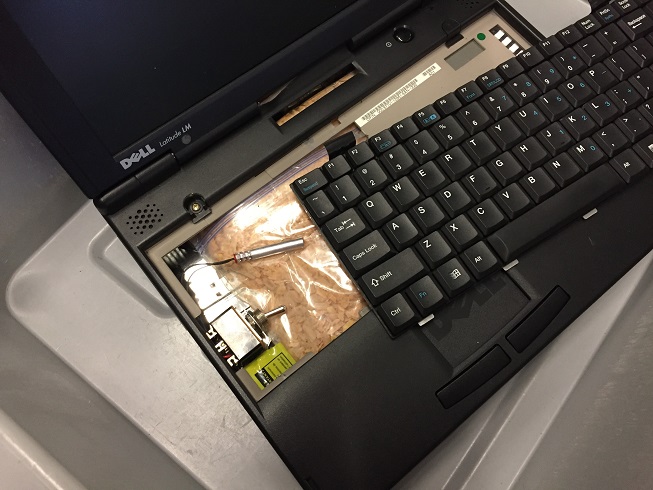BOSTON – On the busiest travel days this spring, TSA officers at Boston Logan International Airport will screen more than 70,000 passengers per day.
Nationally, the number of passengers expected to fly this spring is expected to be the highest in years with more than 2.2 million passengers per day expected to pass through Transportation Security Administration checkpoints during the popular spring break travel period. Nationwide, TSA expects to screen 107 million passengers and crew from March 14 to April 28. This represents checkpoint volume growth of more than 3 percent compared to the same period in 2018.
Preparation is the key to ensure an efficient trip through the security screening process. With that in mind, travelers are urged to come prepared to go through the screening process and to listen to the guidance that the TSA officers are providing once passengers enter the checkpoint.
To facilitate the security screening process, travelers should arrive early to the airport. It is recommended that travelers departing Logan Airport arrive two hours prior to their flights. Arriving early ensures travelers have ample time to account for traffic, parking and navigating through the airport. It is advisable to check-in for a flight ahead of time, either on the air carrier’s website or mobile app, to allow even more time to get through security and relax at the gate.
Part of security preparedness is knowing why TSA has certain protocols in place.
It is helpful to wear slip-on shoes so that they can be easily slipped off prior to going through the checkpoint scanner and slipped back on afterward. TSA’s protocols require that passengers remove their shoes to be X-ray screened because in 2001 a terrorist attempted to detonate an explosive device in his shoes. Thus, shoes come off to allow TSA’s technology to identify whether there is an explosive device concealed inside someone’s shoes.
TSA requires travelers to place large liquids, gels, creams and aerosols, into checked bags such as shampoo, conditioner, suntan lotion, shaving cream and anti-perspirant. If you’ve only got a carry-on bag, make sure all of your liquids follow the 3-1-1 rule, which limits the size of liquids, gels, aerosols, creams and pastes to 3.4 ounces or less and have all of those bottles fit in a single quart size plastic bag and placed in a bin for screening. This includes sun block and tanning sprays for spring break travelers headed to sunny locations. TSA’s protocol limits the size of liquids in carry-on bags because in 2009, a terrorist plot to detonate larger quantities of liquid explosives carried on board aircraft was thwarted, just a few weeks before the plot was launched, resulting in the limit on the amount of liquids allowed to be carried onto airplanes.

Some additional security-focused travel tips to keep in mind:
- Apply for TSA Pre✓® or other trusted travel programs like Global Entry, NEXUS, or SENTRI. To find the trusted traveler program that best suits your travel needs, use the DHS trusted traveler comparison tool. These programs help improve security and provide a more convenient travel experience by affording travelers access to TSA Pre✓® expedited screening lanes. Travelers using the TSA Pre✓® lane do not need to remove shoes, laptops, liquids, belts and light jackets if flying on more than 60 participating airlines departing 200 U.S. airports. To learn more about TSA Pre✓® visit the TSA Pre✓® page or the TSA Pre✓® Frequently Asked Questions page. For more information on the Department of Homeland Security’s four Trusted Traveler programs – including Global Entry and NEXUS– all of which provide TSA Pre✓® eligibility, visit DHS.gov.
- If you have a question, remember that you can Tweet or Message AskTSA. Issues receiving TSA Pre✓® on your boarding pass? Unsure if an item is allowed through security? Get live assistance by tweeting your questions and comments to @AskTSA or via Facebook Messenger on weekdays from 8 a.m. to 10 p.m. and on weekends/holidays from 9 a.m. to 7 p.m. You can also call the TSA Contact Center at 866-289-9673 from 8 a.m. to 11 p.m. weekdays and 9 a.m. to 8 p.m. weekends/holidays; and an automated service is available 24 hours a day, seven days a week.
- Travelers or families of passengers with disabilities and/or medical conditions may call the TSA Cares helpline toll free at 855-787-2227 at least 72 hours prior to flying with any questions about screening policies, procedures and to find out what to expect at the security checkpoint as well as arrange for assistance at the checkpoint.
As a reminder, public awareness is key for supporting TSA’s security efforts. Travelers are encouraged to report suspicious activities, and remember, If You See Something, Say Something™.
###
